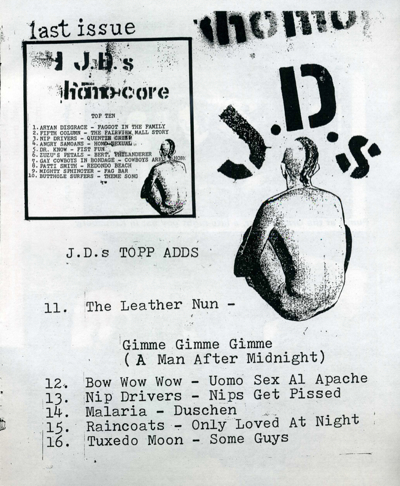
Photograph of Bruce LaBruce by Maxime Ballesteros
An Interview with Auteur of Pornology, Bruce LaBruce
“Now raise your hand up out of the grave. That’s it. Raise it as a protest against all the injustices perpetrated against your kind. Raise it in solidarity with the weak and the lonely and the dispossessed of the earth, for the misfits and the sissies and the plague-ridden faggots who have been buried and forgotten by the heartless, merciless, hetero-fascist majority. Rise! Rise!” So declares Medea Yarn, the strident radical filmmaker in Bruce LaBruce’s film-within-a-film, Otto; or, Up with Dead People (2008).
A zombie-political-porno, which, like most of La Bruce’s work, arouses, amuses, and repels at once, Otto is an incisive critique of gay consumer culture, and its mindless assimilation of bourgeoisie values. The critique has remained fundamental to the director’s queercore aesthetic since the mid-1980s, when BLAB (the artist’s chosen acronym) developed his prescient queer punk zine, J.D.s (co-edited with G.B. Jones).

Not surprisingly, his first feature films, No Skin off My Ass (1993), Super 8½(1993), and Hustler White (1996), with their B-movie depictions of taboo desire, from a skinhead fetish to gang rape and amputee sex, cemented BLAB’s cult status as the reigning daddy of queercore film. That they also conjured the anarchic ideals of writers like Georges Bataille and Jean Genet, who similarly viewed sexual deviance as political transgression, was of course lost on many, but their trademark mix of high and low, of emotional tenderness and abject fetish, still registers as mutiny.
Certainly, anyone looking for the money shot pleasures of commercial porn will be disappointed. BLAB thwarts as he titillates for the same reason he reflexively calls attention to his medium, mashing up genres and referencing other films: to challenge our expectations, and force us to consider our spectatorship.
The trope of the social outcast in later films—be it vampire, prostitute, vagabond or terrorist—functions in much the same way, as what initially provokes our disgust often begets our (eventual) sympathy. Ironic, then, that his notoriety comes from his reputation as a pornographer, when he’s a provocateur first and foremost. True subversives, though, often function as Trojan horses, their weapons necessarily concealed. No wonder his Cuban husband calls him, half-jokingly, Brucito Subversivo—a moniker which, if not as Warholian as his elected name, evokes the same provocative irony.
Angélique Bosio’s aptly titled documentary about BLAB’s life and work, The Advocate for Fagdom (2011), traces the origins of his identification with “the misfits and the sissies and the plague-ridden faggots” from his rural upbringing as the son of farmers in Ontario, Canada to the identity politics of his film school years—both experiences he found equally alienating. In...
You have reached your article limit
Sign up for a digital subscription and continue reading all new issues, plus our entire archives, for just $1.50/month.
Already a subscriber? Sign in




